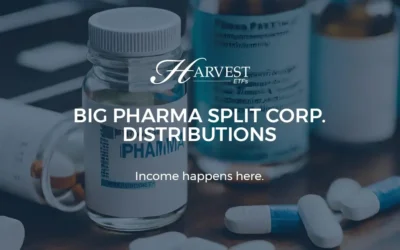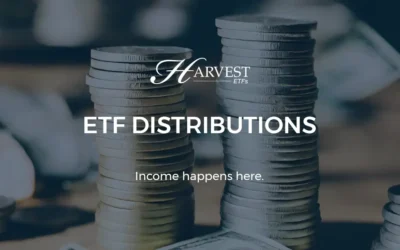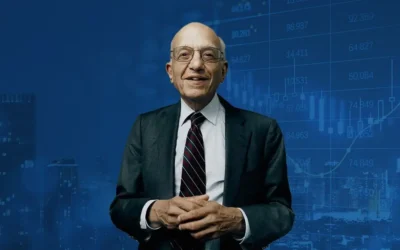When Harvest Portfolios Group Inc., CEO Michael Kovacs founded the company in 2009, global markets were in the middle of their worst stretch in two decades.
Stocks were nearing the end of a 17-month bear grip that saw the S&P 500 index lose 50% of its value from peak to trough. Extraordinary interventions by governments and central banks helped stabilize the financial system, but at the time, the outlook was anything but bright.
While the industry was shaken, Kovacs was optimistic about the way ahead. He recalled the lessons learned during the Crash of 1987 when he was starting out in the investment business. That gave him a map to follow and confidence in the future.
On October 19,
In 2016, Harvest adopted the ETF structure for its products. Harvest uses a quantitative and fundamental process to select and manage its suite of ETF portfolios. The mandates are transparent and simple for clients to understand. Harvest chooses global
The philosophy was put to work in 2009 with the first fund, the Harvest Banks & Buildings mutual fund, which has since also been launched as an ETF. The ETF version of the fund offers investors a convenient and lower cost way to get at Harvest’s longest running income strategy. Both funds invest in a portfolio of mainly Canadian banking, other financial and real estate companies, REITs and up to 25% in similar US holdings. Over the nine years ending Dec. 31,
Harvest has grown steadily and now offers 12 ETFs. The largest by assets are the Harvest Healthcare Leaders Income ETF (TSX
The Harvest Healthcare Leaders Income ETF invests in an equally weighted portfolio of 20 of the largest global healthcare stocks. It offers a monthly income and is enhanced by a covered call strategy.
The Harvest Brand Leaders Plus Income ETF is a globally diversified fund that invests in 20 companies selected from the world’s top 100 rated brands. It also offers a monthly income and benefits from the covered call strategy.
In January 2019, Harvest launched two more ETFs, the Harvest Global Gold Giants Index ETF (TSX: HGGG) and the Harvest Equal Weight Global Utilities Income ETF (TSX
The Harvest Equal Weight Global Utilities Income ETF focuses on 30 large cap global utilities in the telecom, electricity, pipelines, oil and gas storage and transportation sectors. The portfolio is equally weighted and uses a covered call strategy to generate additional income and pays a fixed monthly distribution.
The companies in the ETF are monopolies or oligopolies and are considered essential services because they provide such things as electricity and water. They have pricing power and are defensive assets that pay a steady income in all conditions. They trade actively and have options, which plays to the Harvest strength.
The Harvest Global Gold Giants Index ETF is a bit different, Kovacs says. He believes gold has been in a bear market for six years or more. It is traditionally a defensive asset and as we get later into the economic cycle, “it probably makes sense to have a position in gold.”
Gold tends to do well if markets are dropping and if the US dollar declines. The fund follows a passive index of the 20 largest gold producers who are producing 30 million ounces of gold a year at
Harvest enriches its returns with a covered call strategy that adds to the basic return. Harvest is
A second benefit is that it reduces volatility. This is because the stocks where calls have been written have the downside protection of the premium collected. Here’s an example: The fund buys a stock at $50 per share and sells a call option that pays a premium of $2 per share. If the stock price declines, the fund is $2 per share better off than the fund that did not to write calls. “This is a very simple formula,” Kovacs says. “If the market rolls back we don’t get called away on the stock, but keep the premium. If the market rallies, we lose a little bit. We sell the shares at higher prices than we originally bought them and buy them back again. So it’s a bit of a balance. You’re taking away a little bit of upside to capture the income.”
Harvest writes covered calls to a maximum of 33% on any position which means it will always have a minimum of 67% exposure to the underlying securities. As the economic expansion slows, the Harvest strategy helps reduce cyclical risk. Its funds are less volatile because of the call writing strategy. As well since the companies are global leaders they fall least in a weak market and recover first. Harvest does not own
Kovacs believes Harvest products have broad appeal. Younger investors might want to see
A decade ago if you had $1 million and put it into GICs, you might have seen a 4 to 5% yield, or $40,000 to $50,000 a year. GICs are currently yielding somewhere between 1.8% and 2%, so the income has dropped to $18,500 and $20,000. Unless investors adopt a different strategy they are faced with drawing down their capital.
So how would Michael Kovacs summarize the Harvest way?
“We believe in long term growth through the ownership of great businesses, while generating a steady income along the way. We are simple, transparent and growth-oriented. I really believe in our approach and have 75% of my personal investments just in our products.”
Kovacs says ultimately portfolio managers are in the reassurance business. “People want to be reassured that they own Merck, or Coca-Cola, quality businesses that will be here in 10 years and 15 years. That’s what we own: quality, quality, quality.”








